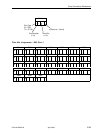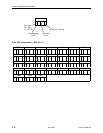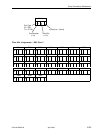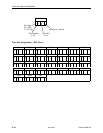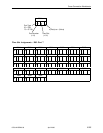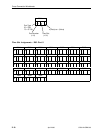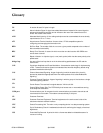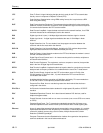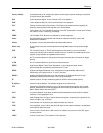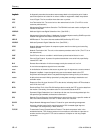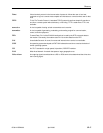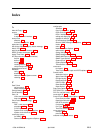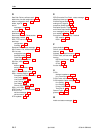
GL-1
8700-A2-GB20-00
April 2000
Glossary
A random bit test 511 bytes in length.
Alarm Indication Signal. A signal transmitted downstream instead of the normal signal to
preserve transmission continuity and to indicate to the rest of the network that a fault
exists. Also called a Blue Alarm.
Alternate Mark Inversion. A line coding technique used to accommodate the ones density
requirements of E1 or T1 lines.
Asynchronous Terminal Interface. A menu-driven, VT100-compatible system for
configuring and managing the termination unit.
Bit Error Rate. The number of bits in error over a given period compared to the number of
bits transmitted successfully.
Bursty Error Seconds. A second in which more than one but less than 320 CRC6 error
events have occurred.
Bipolar Violation. In a bipolar signal, a one (mark, pulse) which has the same polarity as its
predecessor.
Any part of the local loop that is not in the direct talking path between the CO and the
service user.
Carrierless Amplitude and Phase Modulation. A transmission technology for implementing
a DSL. Transmit and receive signals are modulated into two wide-frequency bands using
passband modulation techniques.
Channel Associated Signaling. A type of signaling in which the state of the circuit is
denoted by status bits appropriated from information packets. Also called Robbed Bit
Signaling.
Common Channel Signaling. A type of signaling in which a group of circuits share a single
reserved signaling channel.
Carrier Detect. The received line signal detector. V.24 circuit 109.
Central Office/Central Site. The PSTN facility that houses one or more switches serving
local telephone subscribers.
Communications port. A computer’s serial communications port used to transmit to and
receive data from a modem. The modem connects directly to this port.
Customer Premises.
Customer Premises Equipment. Terminal equipment on the service user’s side of the
telecommunications network interface.
Central Processing Unit. The main or only computing device in a data processing system.
Cyclic Redundancy Check. A mathematical method of confirming the integrity of received
digital data.
Controlled Slip Seconds. A period in which a frame was added or deleted because of a
variance in timing.
511
AIS
AMI
ATI
BER
BES
BPV
bridged tap
CAP
CAS
CCS
CD
CO
COM port
CP
CPE
CPU
CRC
CSS





